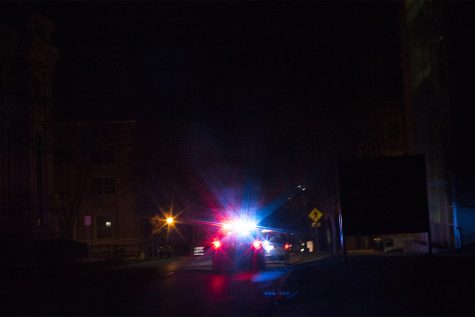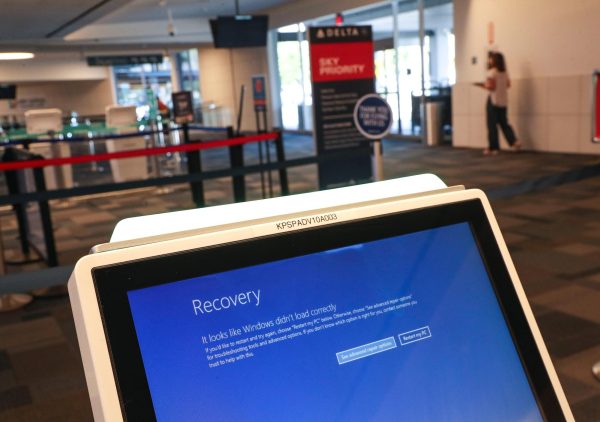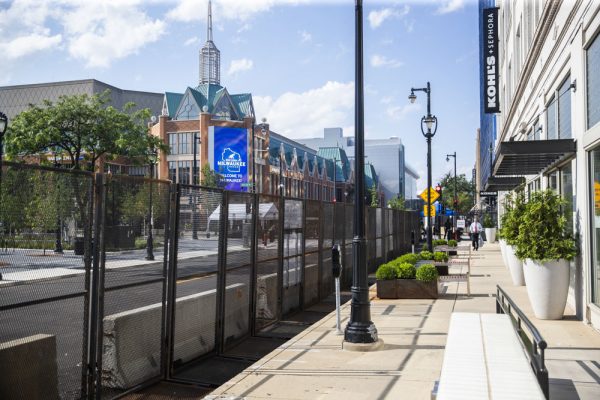Mixed reactions as Iowa City schools do away with hybrid learning
After Iowa Gov. Kim Reynolds signed a bill that requires Iowa schools to offer a fully in-person learning option, parents must decide whether their children should return to school five days a week or learn virtually.
A sign for the Iowa City Community School District is seen outside the district’s administration building on Tuesday, April 28. (Jake Maish/The Daily Iowan)
February 1, 2021
After Iowa Gov. Kim Reynolds signed off on a bill that requires schools to offer a fully in-person instruction option, the Iowa City Community School District scrapped its hybrid model, causing parents to choose between full-time in-person learning or virtual instruction.
Parents have until Feb. 3 to confirm which instruction mode their children will use. Students and parents have another chance to transition to either online or in-person instruction on March 11.
Iowa City parents are experiencing a range of emotions. Iowa City parent Christie Cellmam, who has a second-grade student in the school district, said she is both unsurprised and disappointed by the governor’s decision.
Cellman and her daughter both suffer from facioscapulohumeral muscular dystrophy, a disability that makes them more at risk of experiencing severe symptoms if infected with COVID-19.
“At the end of the day, it feels like it’s forced segregation,” Cellman said. “[The state] is really separating people that are the ideal human from people with underlying health conditions — we’re completely ostracizing them.”
The American Psychological Association reports that, based on research from past pandemics, people with disabilities reported intensified feelings of loneliness in response to social distancing measures.
Other parents are facing different challenges because of COVID-19’s impact on education. Iowa City parent Morgen Bermel has a fifth grader who has spent her year learning 100 percent virtually — and will continue to do so.
Although adjusting to a different instruction method can be challenging, Bermel said people wanting to send kids to school full time haven’t addressed the safety benefits to online schooling — especially for teachers and school support staff. At least one teacher in Iowa has died this year of COVID-19.
“She has been able to adjust to being online and prefers online at this point,” Bermel said. “When we mentioned going back to school, and having to wear a mask all day, that’s not something that she was wanting to do at all. She would rather be home in a safe environment with her parents.”
Bermel added that her family is privileged to be able to make virtual learning a doable experience and understands that the pandemic has different implications for every household.
Meanwhile, some parents believe the school district’s return to in-person instruction is the best step forward.
Tee Orsha, a single mother to three elementary-aged children in the district, is excited for her children to return to the classroom. She said working full-time while supervising her children during their virtual instruction days has been difficult.
“I think it is good, because you still have an option to either learn from school or do it online,” Orsha said. “Even when you go to Walmart or the grocery store, you are taking a chance with COVID-19. Some people have husbands that work, you know. They’re able to afford to stay home. It’s not like that for the rest of us.”
A Pew Research study published last year showed that 23 percent of U.S. children under the age of 18 live in single-parent homes without other adults present. Compared to two-parent households, single-parent households are experiencing greater levels of emotional distress during the pandemic, The American Enterprise Institute reports.
Nathan Peterson, a parent to a kindergartener in the district, said he is thrilled for his child to return to a traditional learning environment.
“Schools have never been completely safe, and it’s not their mission to offer absolute safety. We accept a certain amount of risk every time we open our door,” Peterson said. “COVID-19 is one more risk that we have to accept, but it’s something that we have to measure rationally. The level of level of risk posed by COVID-19 is not so much that it outweighs the advantages of in-person schooling.”
Peterson referenced a recent study conducted by Duke University and the University of North Carolina at Chapel Hill, which revealed that transmission is rare and in-person instruction can resume safely when schools adhere to COVID-19 safety guidelines.
Cellman said no matter their stance on the governor’s decision, all parents are feeling weary during this time.
“We are struggling to juggle jobs, schooling, and also trying to keep our kids on track,” Cellman said. “We are all struggling.”





















